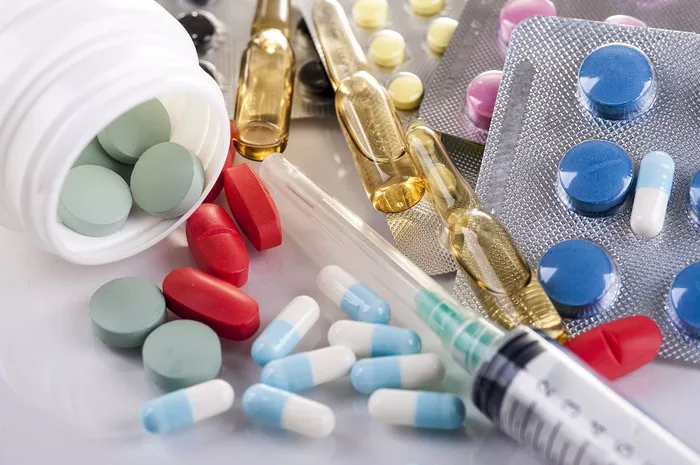Insulin resistance is a condition where the body’s cells become less responsive to the hormone insulin, leading to elevated blood glucose levels. This condition is a precursor to type 2 diabetes and is associated with other metabolic disorders, including obesity, hypertension, and dyslipidemia. Managing insulin resistance is crucial for preventing the progression to diabetes and mitigating associated health risks. This article provides a comprehensive overview of medications used to treat insulin resistance, exploring their mechanisms, benefits, and potential side effects.
Understanding Insulin Resistance
Insulin is a hormone produced by the pancreas that helps regulate blood glucose levels by facilitating the uptake of glucose into cells for energy production. In insulin resistance, cells in the muscles, fat, and liver become less sensitive to insulin, causing the pancreas to produce more insulin to compensate. Over time, this can lead to beta-cell dysfunction in the pancreas and the development of type 2 diabetes.
Lifestyle Modifications: The First Line of Defense
Before delving into pharmacological interventions, it’s important to emphasize that lifestyle modifications are the cornerstone of managing insulin resistance. These include:
- Diet: A balanced diet rich in whole foods, such as vegetables, fruits, whole grains, lean proteins, and healthy fats, can improve insulin sensitivity. Reducing intake of refined sugars and carbohydrates is particularly beneficial.
- Exercise: Regular physical activity helps increase insulin sensitivity by promoting glucose uptake in muscles. Both aerobic exercises and resistance training are effective.
- Weight Management: Achieving and maintaining a healthy weight reduces the burden on the body’s insulin-producing cells and improves insulin sensitivity.
- Sleep and Stress Management: Adequate sleep and stress reduction techniques, such as mindfulness and yoga, also contribute to better insulin sensitivity.
Pharmacological Interventions
When lifestyle modifications are insufficient, pharmacological treatments are considered. The medications for insulin resistance can be categorized into several classes, each with distinct mechanisms of action.
Metformin
Mechanism of Action: Metformin is an oral biguanide that reduces hepatic glucose production and improves insulin sensitivity in peripheral tissues.
Benefits: Metformin is often the first-line medication for insulin resistance and type 2 diabetes. It has a favorable safety profile, does not cause weight gain, and may even aid in weight loss. Additionally, metformin has been shown to have cardiovascular benefits.
Side Effects: The most common side effects include gastrointestinal issues such as nausea, diarrhea, and abdominal discomfort. These side effects are usually transient and can be minimized by starting with a low dose and gradually increasing it. Rarely, metformin can cause lactic acidosis, a serious condition that requires immediate medical attention.
Thiazolidinediones (TZDs)
Mechanism of Action: TZDs, such as pioglitazone and rosiglitazone, work by activating the peroxisome proliferator-activated receptor-gamma (PPAR-γ), which regulates the transcription of insulin-responsive genes involved in glucose and lipid metabolism.
Benefits: TZDs improve insulin sensitivity in muscle and adipose tissue and reduce hepatic glucose production. They also have favorable effects on lipid profiles by increasing HDL cholesterol and lowering triglycerides.
Side Effects: Common side effects include weight gain, edema, and an increased risk of heart failure. There is also a potential risk for bone fractures and, in the case of rosiglitazone, concerns about cardiovascular safety.
GLP-1 Receptor Agonists
Mechanism of Action: Glucagon-like peptide-1 (GLP-1) receptor agonists, such as liraglutide and exenatide, mimic the action of the incretin hormone GLP-1, which enhances insulin secretion in response to meals, suppresses glucagon release, slows gastric emptying, and promotes satiety.
Benefits: GLP-1 receptor agonists improve glycemic control, promote weight loss, and have cardiovascular benefits. They are particularly beneficial for overweight or obese patients with insulin resistance.
Side Effects: The most common side effects are gastrointestinal, including nausea, vomiting, and diarrhea. These effects usually decrease over time. There is also a risk of pancreatitis and, in rare cases, thyroid tumors.
DPP-4 Inhibitors
Mechanism of Action: Dipeptidyl peptidase-4 (DPP-4) inhibitors, such as sitagliptin and saxagliptin, work by inhibiting the enzyme DPP-4, which breaks down incretin hormones. This results in prolonged action of GLP-1 and glucose-dependent insulinotropic polypeptide (GIP), enhancing insulin secretion and inhibiting glucagon release.
Benefits: DPP-4 inhibitors improve glycemic control without causing weight gain. They are generally well-tolerated and have a low risk of hypoglycemia.
Side Effects: Possible side effects include nasopharyngitis, headache, and, rarely, pancreatitis. There have also been reports of joint pain and hypersensitivity reactions.
SGLT2 Inhibitors
Mechanism of Action: Sodium-glucose co-transporter-2 (SGLT2) inhibitors, such as canagliflozin and empagliflozin, work by inhibiting glucose reabsorption in the kidneys, leading to increased glucose excretion in the urine.
Benefits: SGLT2 inhibitors improve glycemic control, promote weight loss, and reduce blood pressure. They also have cardiovascular and renal benefits, making them a valuable option for patients with cardiovascular disease or chronic kidney disease.
Side Effects: Common side effects include genital and urinary tract infections due to the increased glucose in the urine. There is also a risk of volume depletion, leading to dizziness and hypotension, particularly in older adults or those on diuretics. Rarely, SGLT2 inhibitors can cause diabetic ketoacidosis.
Insulin Sensitizers
Mechanism of Action: Insulin sensitizers, such as alpha-lipoic acid and berberine, are dietary supplements that have been shown to improve insulin sensitivity through various mechanisms, including reducing oxidative stress and modulating glucose metabolism.
Benefits: These supplements can be beneficial as adjunct therapies to improve insulin sensitivity and glycemic control.
Side Effects: Alpha-lipoic acid may cause gastrointestinal discomfort and skin rash. Berberine can cause gastrointestinal issues, such as constipation, diarrhea, and abdominal pain.
Statins
Mechanism of Action: Statins, such as atorvastatin and rosuvastatin, are primarily used to lower cholesterol levels by inhibiting HMG-CoA reductase. They also have beneficial effects on insulin sensitivity and inflammation.
Benefits: Statins reduce cardiovascular risk, which is important for patients with insulin resistance who are at higher risk for cardiovascular events.
Side Effects: Common side effects include muscle pain and weakness, liver enzyme elevations, and an increased risk of diabetes with high-dose statins.
ACE Inhibitors and ARBs
Mechanism of Action: Angiotensin-converting enzyme (ACE) inhibitors and angiotensin II receptor blockers (ARBs) are used to manage hypertension. They also improve insulin sensitivity and reduce inflammation.
Benefits: These medications lower blood pressure, reduce cardiovascular risk, and have renal protective effects.
Side Effects: Common side effects include cough (with ACE inhibitors), hyperkalemia, and hypotension. Angioedema is a rare but serious side effect.
Combination Therapy
In many cases, a combination of medications may be necessary to achieve optimal control of insulin resistance and associated conditions. For example, metformin may be combined with a GLP-1 receptor agonist or an SGLT2 inhibitor to enhance glycemic control and provide additional benefits such as weight loss and cardiovascular protection.
Emerging Therapies
Research is ongoing to develop new therapies for insulin resistance. Some promising areas include:
- Farnesoid X Receptor (FXR) Agonists: These drugs target the FXR receptor, which plays a role in bile acid metabolism and glucose homeostasis. They have shown potential in improving insulin sensitivity and reducing liver fat in non-alcoholic fatty liver disease (NAFLD), a condition often associated with insulin resistance.
- Fibroblast Growth Factor 21 (FGF21) Analogues: FGF21 is a hormone involved in regulating glucose and lipid metabolism. FGF21 analogues are being investigated for their potential to improve insulin sensitivity and promote weight loss.
- Gut Microbiome Modulation: The gut microbiome plays a significant role in metabolic health. Probiotics, prebiotics, and fecal microbiota transplantation (FMT) are being explored as potential therapies to improve insulin sensitivity by modulating the gut microbiome.
See also: What Is The Best Weight Loss Diet For Insulin Resistance
Conclusion
Managing insulin resistance requires a multifaceted approach that includes lifestyle modifications and, when necessary, pharmacological interventions. Medications such as metformin, TZDs, GLP-1 receptor agonists, DPP-4 inhibitors, and SGLT2 inhibitors play a crucial role in improving insulin sensitivity and glycemic control. Emerging therapies and combination treatments offer additional options for personalized management of insulin resistance. Collaborating with healthcare providers to develop an individualized treatment plan is essential for optimizing outcomes and preventing the progression to type 2 diabetes and its complications.
Related topics:
What Is Meaning Of Insulin Resistance

























